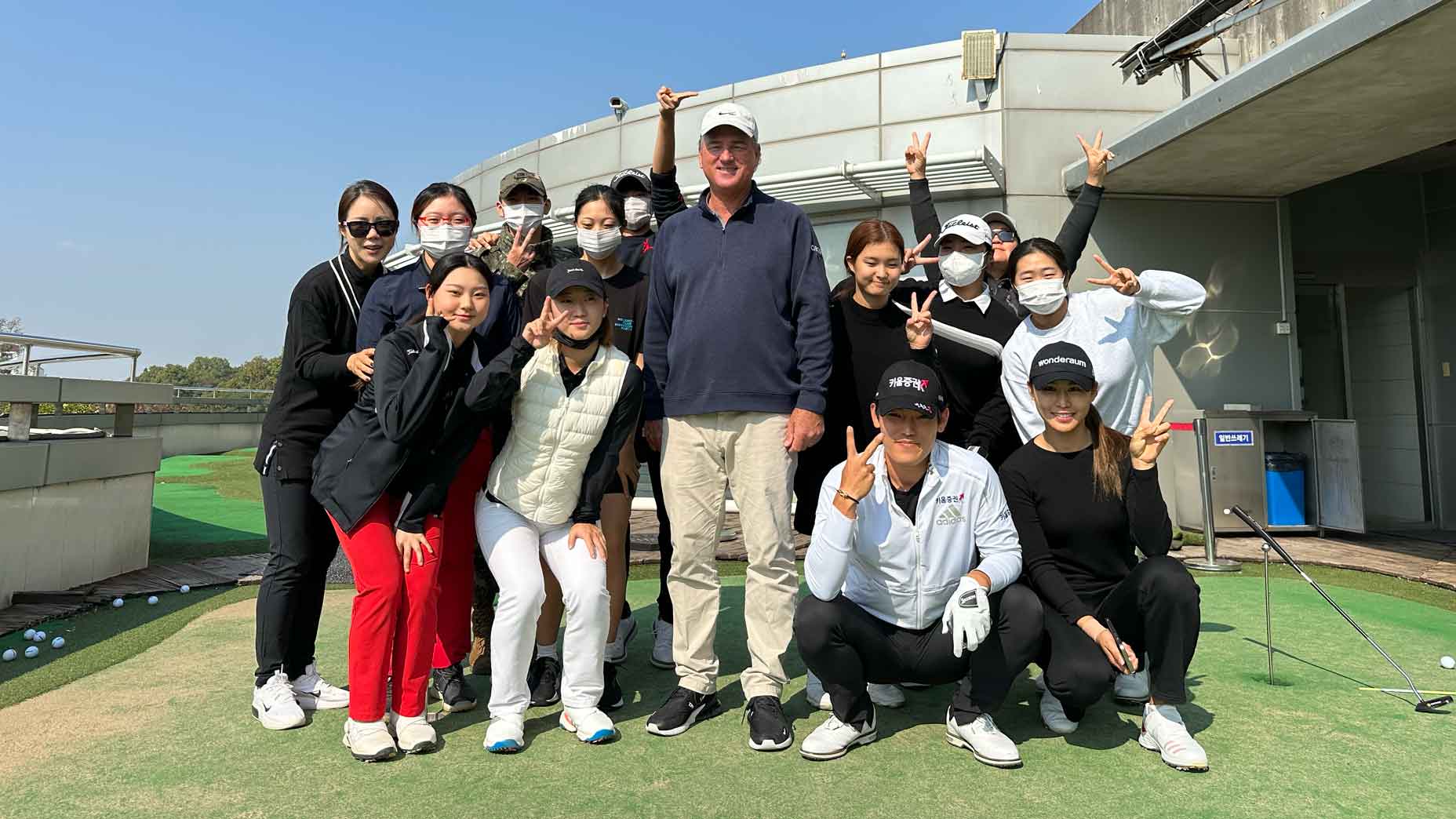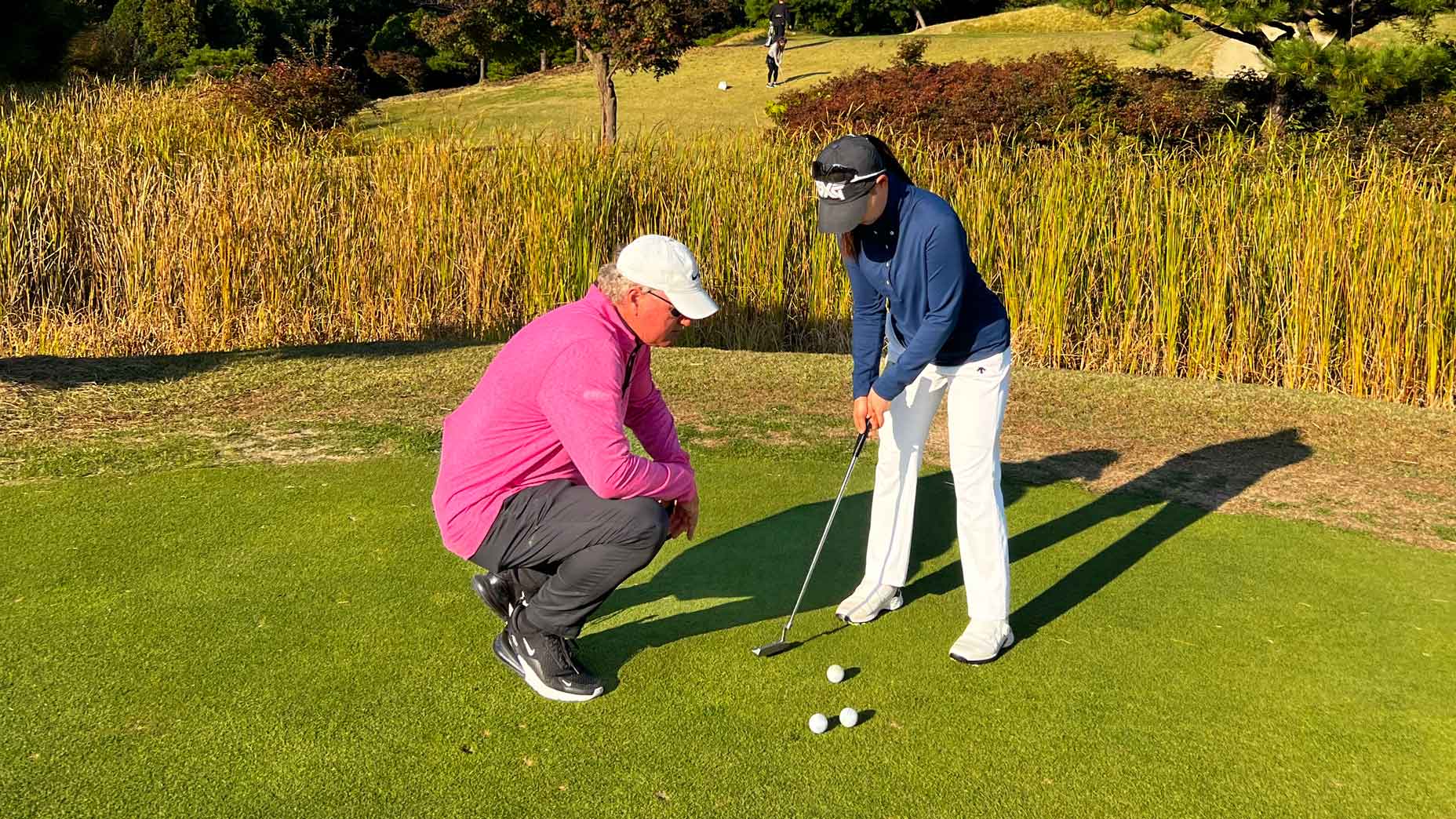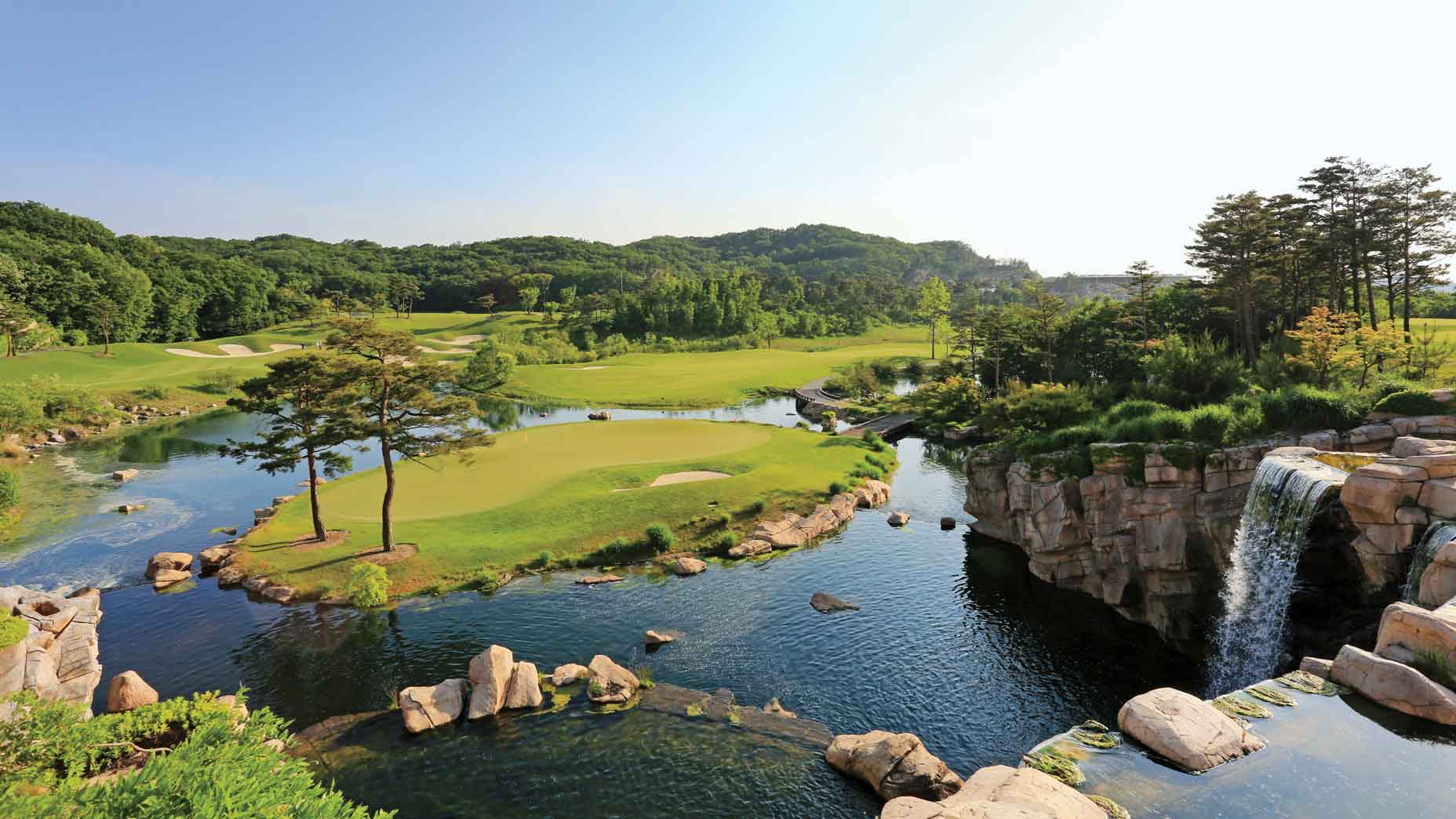
GOLF Prime 100 Trainer Brian Mogg with a few of his South Korean mentees.
Courtesy of Brian Mogg
We every know the second we fell in love with the sport. Many people round my age (40) summon the picture of 21-year-old Tiger Woods strolling off No. 18 at Augusta Nationwide after his runaway win on the 1997 Masters. It wasn’t simply the fiery uppercut after holing out, it was Woods’ embrace of his father, Earl, that endlessly fused the emotion, exhilaration and inspirational energy of the game.
What was that collective second — or who was that galvanizing hero — for the folks of South Korea?
“Straightforward reply: Se-Ri Pak,” says GOLF Prime 100 Trainer Brian Mogg, who’s run an academy within the nation since 2009. “Among the youngsters who’re 20 or 22 years previous, we ask them how they obtained right here, what their purpose for enjoying is. All of them say the identical factor: ‘After I was three years previous, I noticed Se-Ri on TV holding up a trophy and I needed to be like her.’ ”
To really perceive why Pak — a 25-time winner on the LPGA Tour and 2007 inductee into the World Golf Corridor of Fame — stays a cult icon in South Korea, you first need to familiarize your self with a tradition that places highly effective emphasis on delight, self-discipline, competitiveness and respect. Ask any skilled golfer what it takes to excel and those self same phrases would possibly floor.
It’s that focus to element that has made South Korea a hotbed of golf instruction. However not like within the States, the expertise is greater than just some hours every week between scholar and instructor. It’s a way of life dedication that, usually, entails the main target of a participant’s whole household. Mogg understood this early on and employed former LPGA gamers to function coaches at his academy in Seoul. These aren’t simply instructors; they purposefully play the position of parental determine for most of the college students.
“They’re an enormous a part of my success,” Mogg says.

Courtesy of Brian Mogg
Even with the encircling help offered by Mogg’s workforce, dad and mom are nonetheless closely concerned in each side of a participant’s progress. Mogg remembers the all-in expertise of one in every of his former college students who ultimately turned professional and, as is just not unusual in Korea, was counted on to extend the household’s fortunes.
“A whole lot of instances, when a scholar reveals up for his or her classes, the household comes as effectively,” he says. “The household’s shopping for into the dream, and it’s the household’s dream to have this youngster elevate them to a better stage. It’s greater than simply going professional. These youngsters are anticipated to be the following famous person.”
Maybe for good purpose. Kids don’t play informal golf in Korea. They’re not even allowed on most programs. They’re both on a aggressive path or not, partly as a result of instruction within the nation is loopy costly — about ten grand a month at a typical academy. That strain rolls again on the participant if they’re fortunate sufficient to make it on the professional circuit. And, remarkably, many do. Within the present Rolex rankings, 30 of the highest 100 feminine golfers on this planet hail from Korea.
Brian Mogg isn’t the one teacher struck by the extraordinary dedication of younger Koreans. Kenny Kim, a former U.C. Irvine collegian and professional who’s one in every of two Korea-based instructors at an academy owned by GOLF Prime 100 Trainer Chris Mayson, grew up in Korea earlier than shifting to the U.S. at age 11 to pursue the sport beneath the affect of his dad and mom, who figured the States would higher put together him for a profession within the sport.
After his enjoying days ended at age 29, Kim returned to Korea to concentrate on serving to younger golfers be taught the sport, utilizing his personal upbringing as a blueprint to attach with their values and laborious work. His college students work relentlessly.
“It’s Monday by way of Friday or Saturday,” he says. “These youngsters are right here all day, day-after-day. I do know they’re dedicated.”
All the pieces, Kim says, is about competitors. “[In Korea], youngsters will inform me how they should shoot 80 to beat one other child. I’m like, ‘No, you simply have to get higher.’ ”
One other large distinction between instruction in Korea versus the States? “We work on drills,” says Kim, “however we don’t actually have entry to golf programs.” Mogg echoes that, describing small facet rooms wherein college students, with placing mats and eyeline mirrors, will spend hours working towards their stroke.
“An American participant would actually spend 90 seconds there every day,” he says, “however these youngsters will put in an hour on a two- or three-foot putt, making an attempt to see if they’ll begin the ball lifeless straight.”
There’s a widespread notion that Korean golfers spring from a inflexible, meeting line system that stamps out robotic clones. In truth, that system not solely permits for individualism, it encourages it. That’s one other distinctive adjustment Mogg has needed to make. Methodology educating — wherein you decide to only one type of instruction — isn’t thought-about acceptable in Korea. Probably the most profitable instructors take an strategy that fastidiously caters to every scholar.
“Whereas the Korean type of studying is extra left-brained and technical,” Mogg says, “you continue to need to work with every individual, to deal with them as a person and to ensure your classes are being conveyed that approach. I’ve to battle my pure instincts and [adapt] to how naturally they be taught the very best.”
Nonetheless, Mogg finds educating within the nation to be tremendously rewarding. He had the distinction of teaching the first-ever main champion born in Asia, Y.E. Yang, who surged from behind to defeat Tiger Woods on the 2009 PGA Championship.
The reminiscence continues to be contemporary. “After Y.E. gained the PGA, we landed in Seoul at 4:30 within the morning,” Mogg says. “Y.E. is holding the Wanamaker Trophy and we stroll out of this little baggage declare space, flip the nook, and it needed to be the equal of The Beatles coming to America — the hero returned residence and all of Seoul was within the ready room to greet and have fun him.”
Little doubt, someplace in Seoul, a younger Korean had eyes on Yang and his gargantuan trophy, possibly noticed themselves in him and fell in love with the sport.
All of us have that singular second.




